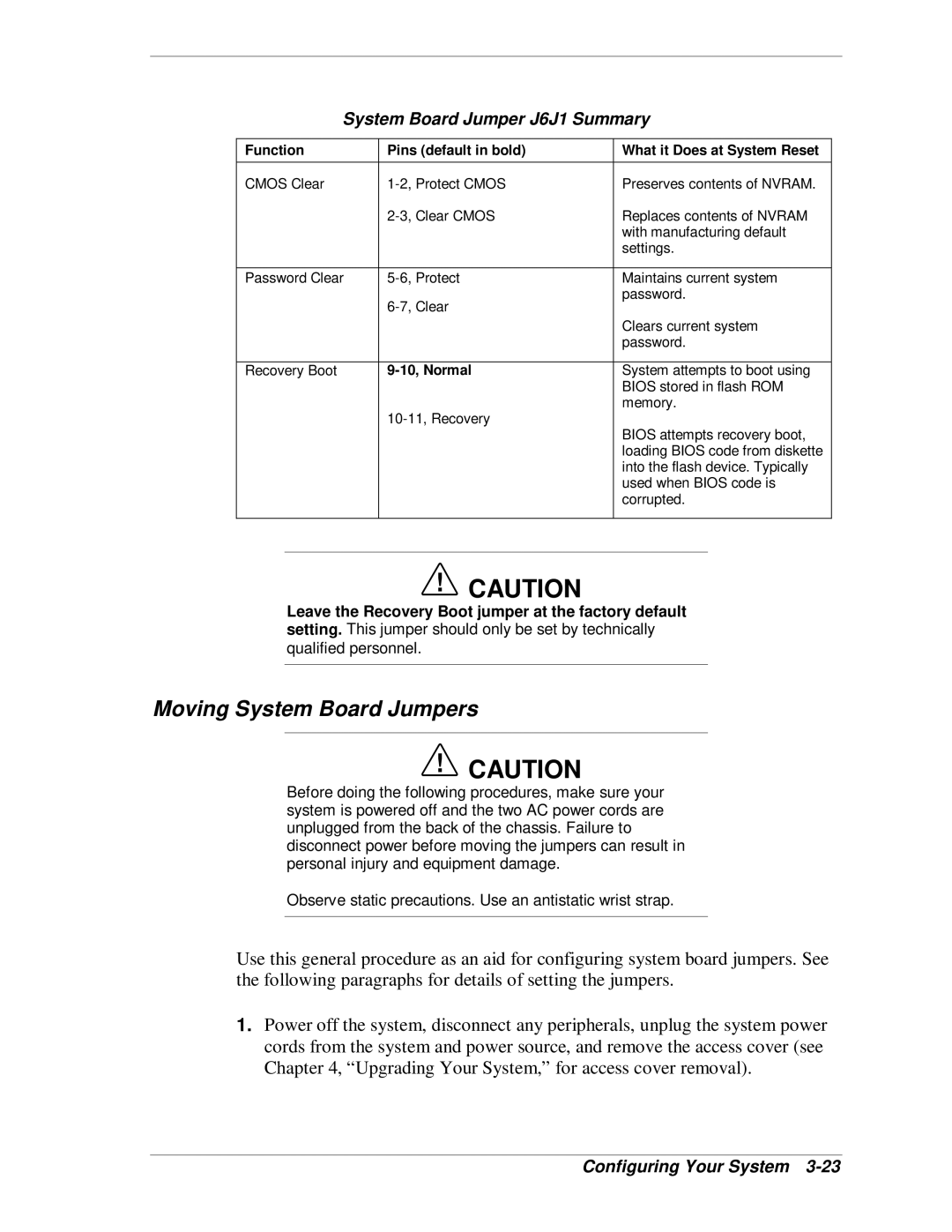
System Board Jumper J6J1 Summary
Function | Pins (default in bold) | What it Does at System Reset | ||
|
|
|
|
|
CMOS Clear | Preserves contents of NVRAM. | |||
|
| Replaces contents of NVRAM | ||
|
|
| with manufacturing default | |
|
|
| settings. | |
|
|
|
|
|
Password Clear | Maintains current system | |||
|
| password. | ||
|
|
|
| |
|
|
| Clears current system | |
|
|
| password. | |
|
|
|
|
|
Recovery Boot |
| System attempts to boot using | ||
|
|
| BIOS stored in flash ROM | |
|
| memory. | ||
|
| BIOS attempts recovery boot, | ||
|
|
| ||
|
|
| loading BIOS code from diskette | |
|
|
| into the flash device. Typically | |
|
|
| used when BIOS code is | |
|
|
| corrupted. | |
|
|
|
|
|
|
|
|
|
|
!CAUTION
Leave the Recovery Boot jumper at the factory default setting. This jumper should only be set by technically qualified personnel.
Moving System Board Jumpers
!CAUTION
Before doing the following procedures, make sure your system is powered off and the two AC power cords are unplugged from the back of the chassis. Failure to disconnect power before moving the jumpers can result in personal injury and equipment damage.
Observe static precautions. Use an antistatic wrist strap.
Use this general procedure as an aid for configuring system board jumpers. See the following paragraphs for details of setting the jumpers.
1.Power off the system, disconnect any peripherals, unplug the system power cords from the system and power source, and remove the access cover (see Chapter 4, “Upgrading Your System,” for access cover removal).
